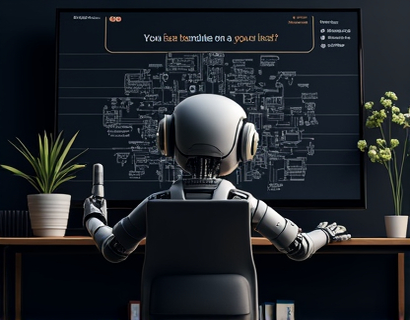Smart Home Elevation: Embracing the Future of Modern Living
In the rapidly evolving landscape of home technology, smart home elevation stands out as a transformative force, redefining the way we interact with our living spaces. The integration of advanced technology into everyday appliances not only enhances convenience but also elevates the overall quality of life. This article delves into the latest innovative appliances that are reshaping modern living, offering a glimpse into a future where technology seamlessly blends with practicality.
The concept of a smart home goes beyond mere automation; it encompasses a holistic approach to enhancing daily routines, improving energy efficiency, and creating a more secure and comfortable environment. Smart home elevation involves the strategic incorporation of high-tech appliances that communicate with each other and with the homeowner, often through a central hub or smart home app. These devices are designed to learn from user behavior, adapt to preferences, and perform tasks with minimal manual intervention.
Understanding Smart Home Appliances
Smart home appliances are equipped with sensors, internet connectivity, and advanced algorithms that enable them to perform a wide range of functions. From smart thermostats that learn your temperature preferences to smart refrigerators that track expiration dates and suggest recipes, these devices are revolutionizing the way we manage our homes. The key to their effectiveness lies in their ability to integrate with other smart devices, creating a cohesive ecosystem that simplifies complex tasks.
One of the most significant advantages of smart home appliances is their energy efficiency. Smart thermostats, for instance, can adjust heating and cooling based on occupancy and external weather conditions, leading to substantial energy savings. Smart lighting systems can be programmed to turn on and off based on natural light levels or user presence, further reducing energy consumption. These energy-saving features not only lower utility bills but also contribute to a more sustainable living environment.
Smart Home Security: A Layered Approach
Security is a paramount concern for homeowners, and smart home technology offers robust solutions to enhance safety. Smart locks, for example, allow for remote access control and can be integrated with security cameras and motion sensors to provide real-time alerts and video footage. This multi-layered approach ensures that your home is protected both physically and digitally.
Smart security cameras offer high-definition video streaming, night vision, and cloud storage options, giving homeowners peace of mind even when they are away. Some advanced systems can even recognize familiar faces and send notifications when an unfamiliar person is detected. This level of detail and responsiveness is a significant upgrade from traditional security systems, providing a more comprehensive and proactive defense against potential threats.
Smart Home Automation: Streamlining Daily Tasks
Automation is at the heart of smart home elevation, making daily tasks easier and more efficient. Smart speakers and voice assistants like Amazon Echo and Google Nest Hub serve as central control points, allowing users to manage various devices with simple voice commands. From adjusting the lights to setting reminders, these devices simplify complex tasks and make home management more intuitive.
Smart home automation extends to kitchen appliances as well. Smart ovens can be preheated remotely, and their cooking modes can be controlled through a smartphone app. Induction cooktops with integrated smart technology can adjust heat levels automatically based on the cookware used, ensuring precise cooking results. These features not only save time but also enhance the cooking experience, making the kitchen a more intelligent and user-friendly space.
Health and Wellness in the Smart Home
The smart home ecosystem also prioritizes health and wellness, offering solutions that promote a healthier living environment. Smart air purifiers monitor indoor air quality and automatically activate when pollutants are detected, ensuring a cleaner and healthier atmosphere. These devices can be integrated with smart thermostats to maintain optimal temperature and humidity levels, further enhancing comfort and well-being.
Wearable devices and health monitoring systems can connect to the smart home network, providing real-time health data and alerts. For instance, a smart scale can track weight, body fat percentage, and other health metrics, sending the information to a central hub for analysis and tracking. This integration allows for a more comprehensive approach to health management, empowering homeowners to make informed decisions about their well-being.
Enhancing Home Entertainment: Smart Living at Its Best
Entertainment is another area where smart home technology shines. Smart TVs with built-in streaming capabilities and voice control features offer an immersive viewing experience. These TVs can be integrated with smart speakers and sound systems for a surround sound setup, creating a home theater environment without the need for complex wiring.
Smart home theaters can be controlled through a single app, allowing users to adjust lighting, temperature, and audio settings with ease. Some systems even include automated curtains and blinds that adjust based on the time of day or the content being played, enhancing the overall viewing experience. This level of integration transforms the living room into a versatile and enjoyable space for relaxation and entertainment.
Challenges and Considerations
While the benefits of smart home elevation are undeniable, there are several challenges and considerations to keep in mind. One of the primary concerns is privacy and security. Smart devices collect a significant amount of data, and ensuring this data is protected is crucial. Homeowners should choose reputable brands that prioritize data security and provide transparent privacy policies.
Another consideration is compatibility. The smart home ecosystem is diverse, with various devices from different manufacturers often using different protocols. Ensuring that devices work seamlessly together requires careful planning and selection of compatible products. Using a central hub or a smart home platform that supports multiple protocols can help mitigate this issue.
Cost is also a factor, as high-tech appliances can be expensive. However, the long-term savings on energy bills and the increased value of the home often justify the initial investment. Additionally, many manufacturers offer financing options or bundles that can make smart home upgrades more accessible.
Future Trends in Smart Home Technology
The future of smart home technology is exciting, with several trends on the horizon. One of the most promising developments is the integration of artificial intelligence (AI) into smart devices. AI-powered appliances can learn from user behavior and adapt to preferences more intelligently, predicting needs and performing tasks proactively. For example, a smart refrigerator could suggest meal plans based on the ingredients it detects and even place orders for missing items.
Another trend is the increased focus on sustainability. As environmental concerns grow, smart home devices are becoming more energy-efficient and eco-friendly. Solar-powered devices, energy-harvesting technology, and devices that optimize resource usage are becoming more prevalent. These innovations not only reduce the environmental impact of smart homes but also contribute to lower utility costs.
Interoperability is another key area of development. Industry standards and protocols are being established to ensure that devices from different brands can communicate and work together seamlessly. This will create a more unified and user-friendly smart home experience, reducing the complexity and frustration often associated with setting up multiple devices.
Conclusion
Smart home elevation represents a significant leap forward in modern living, offering a blend of convenience, efficiency, and enhanced well-being. By integrating advanced technology into everyday appliances, homeowners can create a smarter, more comfortable, and more secure living environment. While there are challenges to consider, the benefits and future potential of smart home technology make it an exciting and worthwhile investment for tech-savvy homeowners.
As the smart home ecosystem continues to evolve, the possibilities for innovation and improvement are vast. Embracing these advancements can transform the way we live, making our homes not just places to reside but true extensions of our personal and digital lives.










































